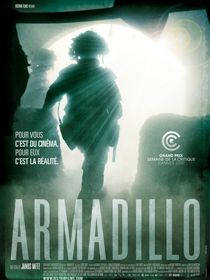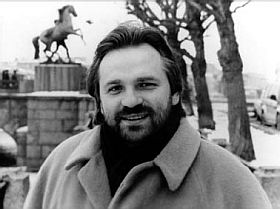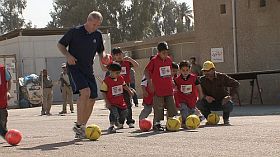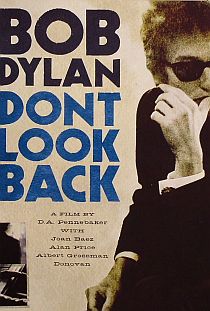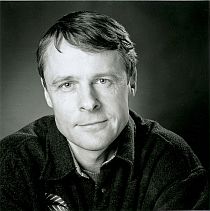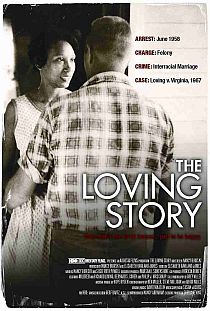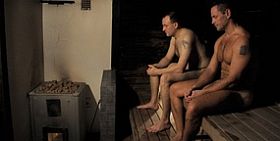


Anne Wivel: Svend
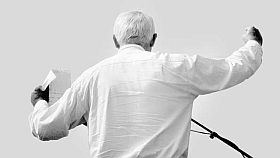
This is a review in Danish language of a new documentary made by Anne Wivel, acclaimed veteran in Danish documentary. For years she followed her husband, politician Svend Auken in his work in- and outside Denmark. Auken, a strongly committed humanist, suffered from a cancer illness but was active until his death in August 2009. The film, that premieres this month, is brilliant.
Udgangspunktet er jo klart fra start. Dette er en film om en mand, som er død. En dansk politikers sidste år, ”filmet og erindret af Anne Wivel”, som skrevet står på lærredet i filmens begyndelse. Anne Wivel som levede med Svend Auken i syv år, fra 2002 til hans død i august 2009. En hustru som filmer sin mand, som er syg af kræft, det kunne gå hen og blive flæbende, det er det ikke, slet slet ikke, det er tværtimod en bevægende og smuk erindring som instruktøren giver sit publikum, og på mange måder også en almenmenneskelig henvendelse, som efterlader én smilende glad over at have mødt et fint, kærligt menneske. Og forpustet for det var dog helt utroligt, hvad Svend Auken nåede af møder, taler og tv-medvirken. Og trist, naturligvis, over at det gik den vej, som det gik. Som han siger, jeg ville jo gerne leve lidt længere.
Svend Aukens engagement i klimapolitik, hans internationale betydning som medlem af diverse bestyrelser, hans retoriske begavelse og talent for at tale til store forsamlinger og gribe dem om hjertet, hvad enten han talte på dansk eller engelsk – er stærkt dokumenteret af Anne Wivel, som fulgte ham på mange rejser verden rundt. Men det er ikke derfor, at denne film om en mand, som var politiker, hæver sig højt over de mange andre politiker-film vi er blevet præsenteret for i de sidste år (Fogh, Khader, Lykketoft f.eks.). Grunden er den enkle, at her bringes vi i selskab med en politiker i sit hjem, i sit sommerhus, i en sommerlejlighed i det sydlige Frankrig, på et hotelværelse med himmelseng i Brønderslev! Med Anne Wivel bag kameraet, i årtier en af dansk dokumentarfilms stærkeste profiler som instruktør og producent.
Og det er jo derfor, at filmen hæver sig. Det er en film, det her, der er foretaget nogle valg ud fra et stort materiale, der er i klipningen fundet en rytme, hvor pauserne i det politiske ”udeliv” spiller en rolle, ind imellem de mange møder, hvor de mange små vidunderligt sigende og smukke dagligdagsøjeblikke træder frem og skaber tonen. Når Svend kommer hjem, står Anne for enden af trappen og filmer ham igen og igen. Man sidder faktisk undervejs og venter på at den scene skal gentage sig. Når Svend småsnakkende til kvinden bag kameraet spejler æg i det lille køkken og varmer mælk i mikroovnen. Det gør han mange gange i filmen. Når han starter en sætning, men ikke kan afslutte den, fordi han læser avis og ikke kan ”multi-taske”. Når han sidder i en stol med sit boardingkort i jakken, strandet i Ålborg lufthavn, maskinen går ikke pga. maskinfejl, så falder man med ham helt ned, stresser af og tager på hotel i Brønderslev. Eller når han bliver hamrende irriteret, fordi taxaen ikke kommer og han skal være i et tv-studie om et øjeblik, tingene skal klappe. Genkendelig hverdagsbeskrivelse.
Anne Wivel er bag kameraet, hun stiller spørgsmål til Svend, svarer når han spørger og beder om reaktioner til sine taler, hun er der hele tiden, men trænger sig ikke på, viser ikke hvor forfærdeligt, det må have været at filme sin mand blive mere og mere syg – for så i én sekvens, Villefranche i Sydfrankrig i januar 2009, at lade kameraets bevægelser skrive et digt om et dejligt rum med udsigt til vand, et rum med smukke ting, musik og stearinlys. Det emmer af kærlighed.
Danmark, 110 mins., Instruktør & fotograf: Anne Wivel, Klippere: Camilla Skousen og Peter Winther, Komponist: Povl Kristian. Med støtte fra DFI og DR.
Filmen får premiere i 68 DoxBio biografer den 11. september og den 14. September, derefter vises filmen dagligt i 10-15 af biograferne. Hvor og hvornår se
